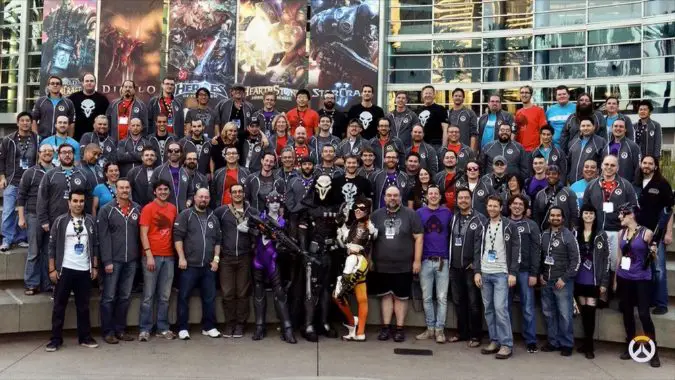BlizzCon 2017: How Overwatch rose from Titan’s failure
Ever wonder just how Blizzard went from the utter failure of Titan the overwhelming success of Overwatch? At BlizzCon, Overwatch Game Director Jeff Kaplan and Assistant Art Director Arnold Tsang gave us a behind the scenes look Overwatch’s origins.
The story started in summer 2013, shortly after Blizzard canceled the long-in-development MMO Titan. Blizzard gave the ex-Titan team a short six weeks to come up with a brand new game to work on. But instead of sinking all six weeks into a single project, Team 4 decided to come up with three game ideas, spending two weeks on each.
Here’s what happened.
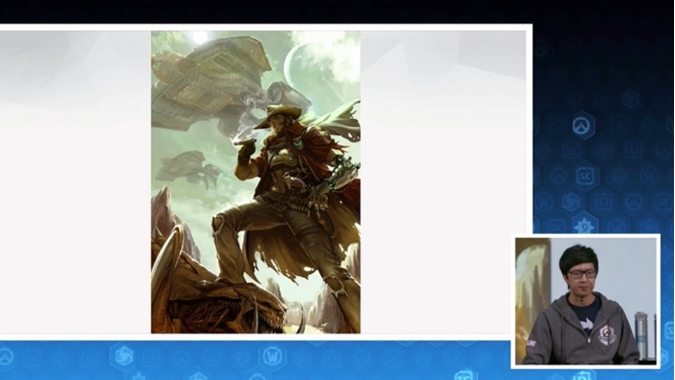
Project #1: The StarCraft MMO that never was
Admittedly, Kaplan never specified that this was an MMO, but it sounded like it could be. This first project was inspired by some of Chris Metzen’s concept art from StarCraft 1. (And the game concept art Team 4 made based on its inspiration, above, looks an awful lot like a familiar Overwatch character…)
The project took a lot of inspiration from Warcraft and World of Warcraft. While WoW is still Warcraft, it looked at the universe from a different perspective and did things you couldn’t do in an RTS. The StarCraft universe is a compelling one, and Team 4 thought they could do something similar.
At the end of those two weeks, everyone loved the StarCraft-based concept they’d come up with. But they stuck with the three-game timeline, assuming they would phone it in for two more projects and get back to the StarCraft idea.
As you can probably guess, that didn’t happen.
Project #2: The crossroads of the universe
The next project was also inspired by Chris Metzen, who proposed the idea of a remote outpost planet that was a sort of crossroads. A huge range of people and aliens all passed through the same planet, making it a setting with a lot of possibilities — and as the team worked on art and engineering concepts, they got pretty hyped about this project, too.
Crossroads was going to be a class-based MMO, with six to nine classes, but the concept started falling apart in the very first class design meeting. Jeff Goodman, who had been the class designer for Titan (as well as working on WoW and, eventually, Overwatch) said that he wished they could make a game with more than just a handful of classes. He wanted a game with 50 classes, each one very focused, with their own unique abilities and backstories.
Considering how hard WoW is to maintain with its handful of classes, this idea seemed… impractical, at best, for an MMO. And that’s where the idea for Overwatch really catalyzed.
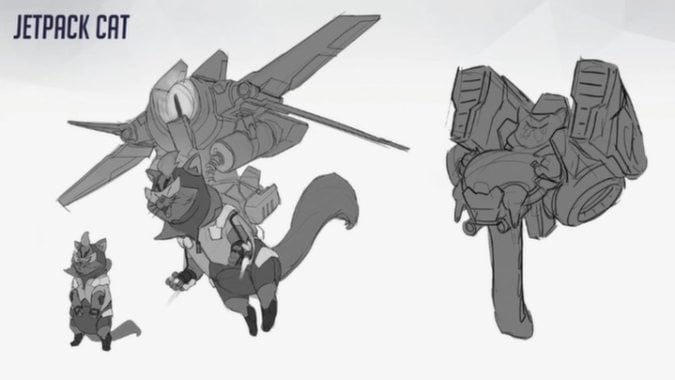
Project #3: Finally developing Overwatch
The team had only been working on Crossroads for a few days, but the idea of a game with tons of classes stuck in Kaplan’s head. Even though he was supposed to be working on Crossroads, he started putting together a short presentation about a new game. He used character art from Titan and came up with hero concepts and stories based on each. These unique characters were something they just couldn’t do in an MMO. But in a character-based shooter, they could.
The team didn’t make it to the end of the scheduled two weeks of development on the Crossroads concept. Instead, they took this proto-Overwatch idea to Chris Metzen, who said that’s exactly what they should work on.
The next day, everyone on Team 4 was tasked with coming up with an Overwatch hero idea. By the end of the morning, they had 48 new hero concepts — including one from Alex Afrasiabi, who suggested a Russian woman riding a bear and dual-wielding AK47s. Her ultimate had the bear also pulling out guns, which Kaplan called “a very Alex Afrasiabi idea.” Over the development process, the team continued to generate ideas, pushing the boundaries of how crazy they could get. (Heavily armed bears? No. Rocket cats? No. Sentient gorillas from the moon? That sounds like Overwatch!)
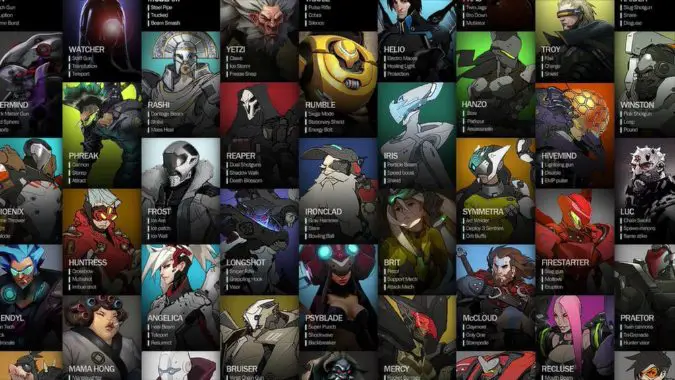
Selling Overwatch to the executives
Team 4 had some awesome ideas, but it takes more than ideas to make a game. They had to convince the executives at Blizzard and Activision that Overwatch was a good idea — especially after Titan.
It started with a new pitch document, including the character pitch image above, which Kaplan said “is going to make the internet explode.” (And as it includes a bunch of not-yet-seen heroes, he’s probably right.) A lot of the art used in these early concepts came from Titan (though Winston was an Overwatch original design), but the style — and the characters — evolved as the team worked. The Overwatch world gradually developed its own look, full of vibrant colors.
It was an easy sell to Blizzard, but pitching it to Activision left the team nervous. After all, they were about to tell the makers of Call of Duty that they had a great idea for a brand new game: a shooter! (Something Kaplan says he only thought about after the fact.) Kaplan ran through the slides of Team 4’s Overwatch presentation to a silent audience, until Activision CEO Bobby Kotick stopped him and asked him to go back three slides.
“I’m thinking ‘Oh no, what was back three slides?'” Kaplan said.
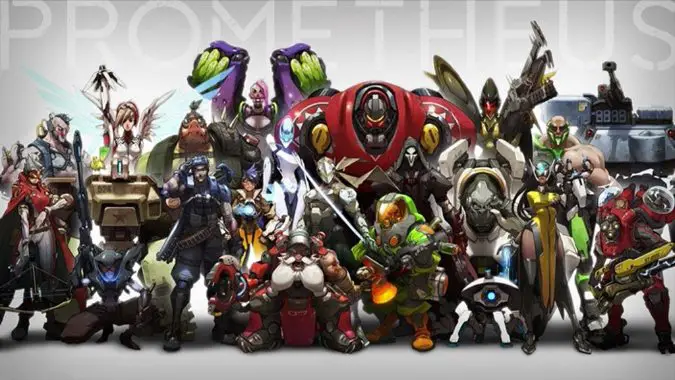
It turned out to be the original hero lineup, which will look familiar to any Overwatch fan: a row of heroes on a white background. The heroes don’t look quite the same as they do today, but the style is already Overwatch. “This is going to be an amazing universe,” Kotick said, and the rest is history.
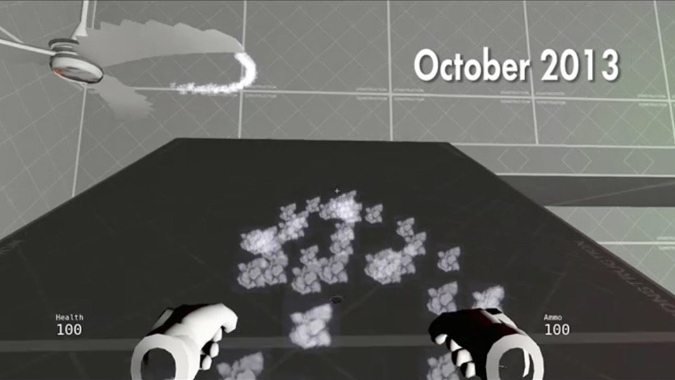
Going from a pitch to a game
It’s a common misconception that Overwatch is just a scaled-down version of Titan that reused code and models. But while much of the early concept art was recycled from Titan, the art style gradually developed into something all its own, and not a single model from Titan made it into Overwatch. Some of Titan’s code did get recycled, but very little: 3.6 million lines of code were deleted, and only 760,000 lines were kept. The team had a lot of work to do to build a playable game.
And now we have a rare look under the hood. “We don’t like to show works in progress,” Kaplan explained, because works in progress aren’t pretty. (“The art team is going to kill us,” Tsang joked.) As he starts to go through videos of Overwatch as it was in development, you can see where he’s coming from.
The first scenes rendered by the Overwatch engine, in October 2013, weren’t pretty. They showed a mostly grayscale map with a pair of disembodied hands standing in for the character. There weren’t yet any visual effects, and they couldn’t even put guns in the character’s hands.
But development sped along from there. By November the team was working on scale and physics. Tracer was the only model in game, but she finally had guns. (Though everything was still mostly a monotone that’s a long ways off from the Overwatch world we know today.) Then came core combat mechanics, building a game the team at Blizzard could start playtesting to prove it could be fun, even if it had no visual polish.
The team intended to finish one map — the Temple of Anubis — and four characters — Tracer, Reaper, Widowmaker, and Reinhardt — for this playable build. But they were having trouble with Reinhardt, who was proving difficult to balance as game’s first melee character. Instead, they switched to a character that was simply called “rocket dude” that was already fun to play — and who would eventually become Pharah. “This is some of the worst sniping you’re ever going to see,” says Kaplan while an early video of Pharah plays. “And it’s me.”
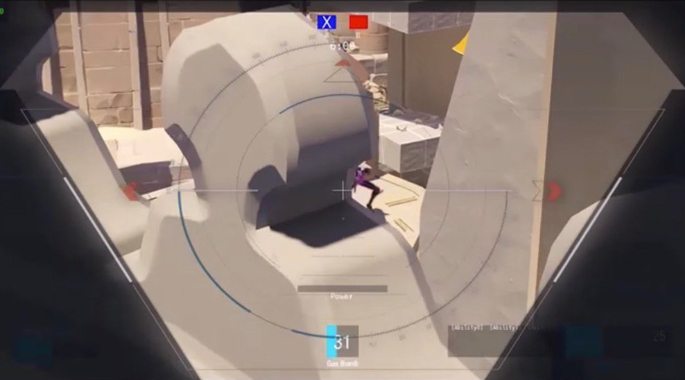
Creating Overwatch was a long iterative process. Each video Kaplan showed was a little cleaner, a little more like the Overwatch we now know. By the time we got to footage from 2014, there’s no question that this is Overwatch, even if it lacked visual refinement (and a lot of the heroes we know and love today).
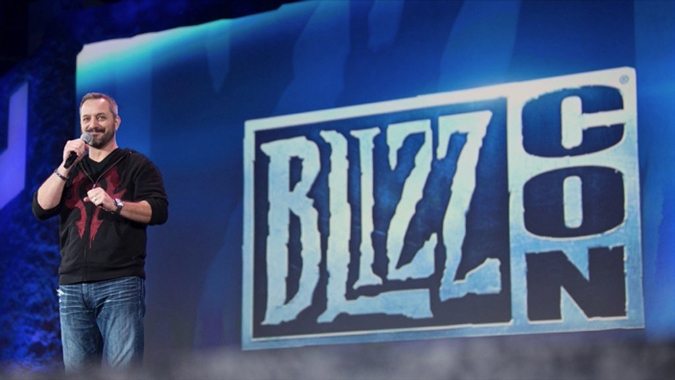
The road to BlizzCon 2014
It was these early 2014 builds that convinced Blizzard Overwatch would be coming to BlizzCon that year. The year before, Titan had been canceled, but now Team 4 was pushing to have a polished, playable product — no teaser video would do — for BlizzCon crowds later that year. They wanted 12 heroes and three maps, so everyone could play over the weekend and decide for themselves whether they liked the game.
Some of the team’s ideas were a hit… and some were a miss. (And they all took a lot of work to get those ideas just right.) For example Torbjorn originally had a claw trap ability, which let him set a trap that would grab enemies with a chain and hold them in place. It was the perfect setup to line enemies up for a sniper — or a turret — but it turned into a nightmare that enemy heroes couldn’t escape. It even caused the team to let Reinhardt throw his hammer, because without ranged skills there was no way for him to destroy the trap and get away. (That, then, caused other problems, as Reinhardt would be weaponless while his hammer was flying through the air. Eventually, his ranged ability became Fire Strike.)
But then Metzen walked out on stage at BlizzCon 2014… and, well, we all know the story from there.
But what’s next for Overwatch?
Besides the parade of new heroes and maps that roll out regularly, that is? Kaplan dropped a few hints in a brief Q&A at the end of the panel. “We’re only as good as our last patch,” he said, and the team is constantly playing with new ideas to make the game even better. They’ve done Overwatch cinematics and anime and comics (and novels aren’t off the table for the future), but the team’s long-term ambitions are even bigger than that. Just as Warcraft 1 launched a huge franchise of games we fell in love with, Team 4 hopes Overwatch is just Overwatch 1… with a lot yet to come.
Please consider supporting our Patreon!
Join the Discussion
Blizzard Watch is a safe space for all readers. By leaving comments on this site you agree to follow our commenting and community guidelines.
 @faience
@faience